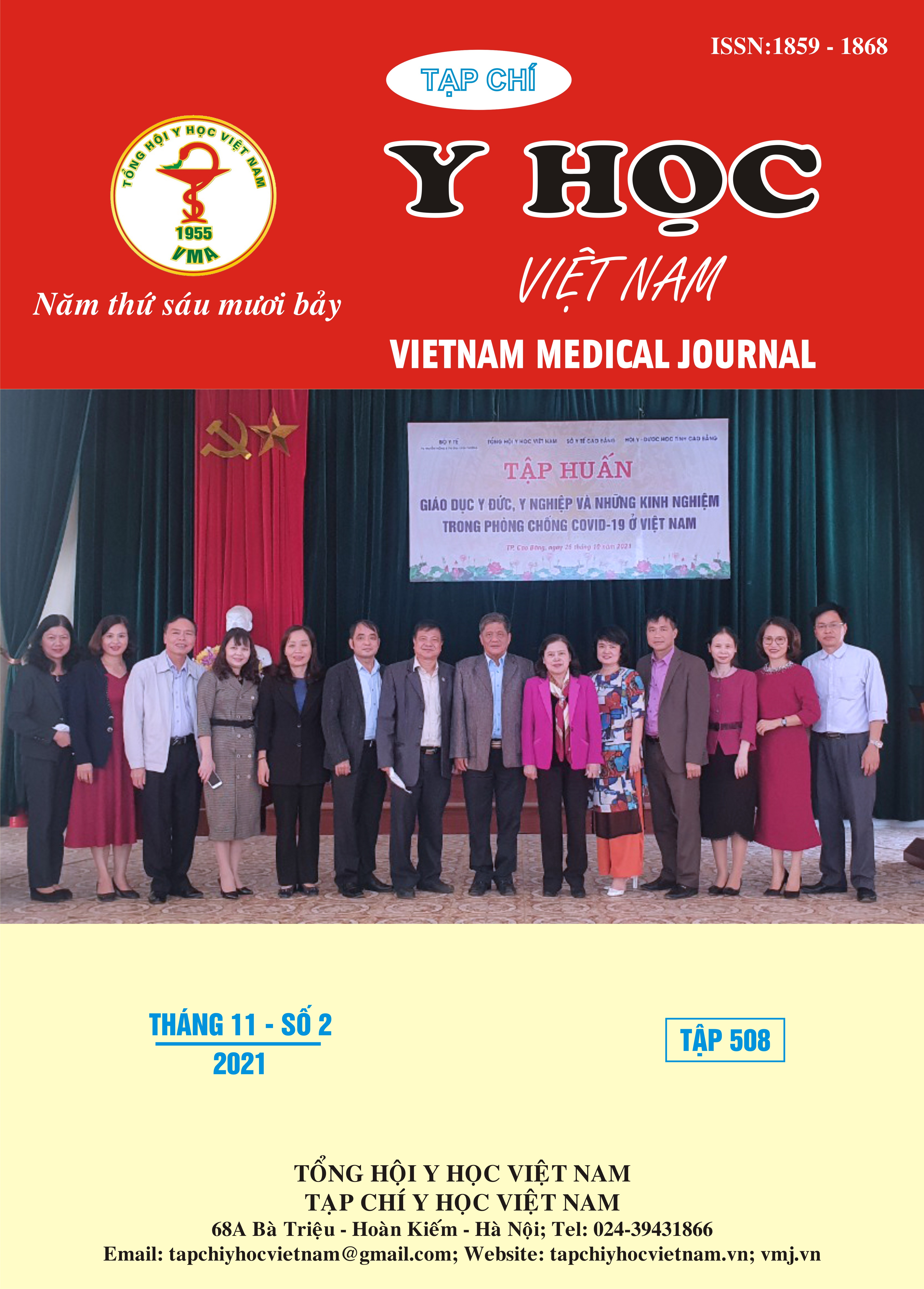EVALUATE RESULTS OF NURSING PATIENTS AFTER LAPAROSCOPIC ESOPHAGECTOMY AND SOME RELATED FACTORS AT K HOSPITAL IN 2020-2021
Main Article Content
Abstract
Objectives: Analysis the results of nursing for patients undergoing laparoscopic esophagectomy and some related factors. Methods: A prospective descriptive study on 138 esophageal cancer patients treated by laparoscopic plastic surgery at Abdominal SurgeryDepartment No2- K Hospital from January 2020 to May 2021. Outcomes of patients care after surgery were assessed through 3 levels of good, medium, and bad and the influence of some factors related to hospital-acquired infection. Data were collected, processed, cleared and computerized by using Epidata and Excel software. Data processing using Stata 14 statistical software. Results: The majority of patients afterlaparoscopic esophagectomy treatment achieved good results (72.5%), average (26.8%). Most of the patients were stable on discharge. There was 1 case of death after surgery. Factors affecting hospital-acquired infection include hospital nursing days, preoperative chemotherapy, history of diabetes, frequency of pleural tube care with statistical significance p < 0.05. Conclusion:Take care of patients after endoscopic esophagectomy has good results and reduces the risk of hospital-acquired infections.
Article Details
Keywords
Esophageal cancer, laparoscopic esophagectomy surgery
References
2. Lâm Việt Trung, Nguyễn Minh Hải, Võ Tấn Long và cộng sự (2012). Đánh giá tính khả thi, an toàn và kết quả ngắn hạn trong phẫu thuật nội soi điều trị UTTQ,Phẫu thuật nội soi tập 2, số 1, Tr 48-52.
3. Triệu Triều Dương (2008). Nghiên cứu phẫu thuật nội soi điều trị UTTQ tại bệnh viện 108”. Y học TP. Hồ Chí Minh, 12, Tr 200-203.
4. Luketich J. D., Pennathur A., AwaisO., Levy R. M., Keeley s., ShendeM., et al. (2012), Outcomes after minimally invasive esophagectomy: review ofover 1000 patients. Ann Surg, 256(1), 95-103.
5. Atkins B. Z., Shah A. S., Hutcheson K. A., et al (2004), Reducing hospital morbidity and mortality following esophagectomy. Ann Thorac Surg, 78(4), 1170- 1176; discussion 1170-1176.
6. Bakhos C. T., Fabian T., Oyasiji T. O., et al (2012), Impact of the surgical technique on pulmonary morbidity after esophagectomy. Ann Thorac Surg, 93(1), 221-226; discussion 226-227.
7. Ferri L. E., Law S., Wong K. H., et al (2006), The influence of technical complications on postoperative outcome and survival after esophagectomy. Ann Surg Oncol, 13(4), 557-564


